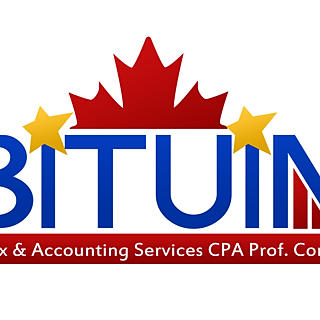Exploring Effective Tax Savings Strategies for Individuals in Canada
- Bituin Staff
- Aug 8
- 4 min read
Tax season can feel like a daunting task, particularly for those trying to grasp the nuances of the Canadian tax system. By understanding various tax savings strategies, you can significantly reduce your tax liabilities and increase your tax return. This blog post aims to simplify tax savings strategies for individuals in Canada, offering practical tips and examples that can help you keep more of your hard-earned money.
Understanding the Canadian Tax System
Canada's tax system uses a progressive structure, where your tax rate increases with your income. This ensures that contributions toward public services are fair. However, it also means that individuals must actively seek methods to lower their tax burdens. In 2022, for example, families earning under $50,000 benefited from an average tax refund of $1,490.
Understanding available options for tax savings is crucial and can vary based on your income level, family status, and financial goals. The better you know these options, the more equipped you will be to make informed decisions that fit your financial situation.
Utilize Tax Credits
One of the most effective ways to reduce your tax bill is to take full advantage of tax credits. Unlike deductions, which lower your taxable income, tax credits directly decrease the amount of tax you owe.
Non-Refundable Tax Credits
Non-refundable tax credits can bring your tax payable down to zero but will not result in a refund. Noteworthy examples include:
Basic Personal Amount: All Canadian residents can claim this credit, allowing you to earn up to $14,398 tax-free in 2023.
Spousal Amount: If you support a spouse or common-law partner with a lower income, you may claim this credit up to $9,400 if they earn less than that threshold.
Refundable Tax Credits
Refundable tax credits can result in a refund even if you owe no taxes. Some significant refundable credits include:
GST/HST Credit: Families with low or modest incomes may receive up to $467 annually to offset the Goods and Services Tax (GST) or Harmonized Sales Tax (HST) they pay.
Canada Workers Benefit (CWB): This tax credit offers financial assistance to eligible low-income workers. In 2022, single individuals could receive up to $1,395 in CWB.
Utilizing these credits can greatly reduce your tax burden and ensure you maximize your return.
Contribute to Registered Accounts
Contributing to registered accounts is another highly effective tax-saving strategy. This includes accounts like the Registered Retirement Savings Plan (RRSP) and the Tax-Free Savings Account (TFSA).
Registered Retirement Savings Plan (RRSP)
Contributions to your RRSP are tax-deductible. For instance, if you contribute $5,000 to your RRSP, your taxable income may be lowered by that amount, potentially saving you hundreds in taxes depending on your marginal tax rate. Furthermore, investment earnings within the RRSP grow tax-deferred until withdrawal, typically during retirement—when you might be in a lower tax bracket.
Tax-Free Savings Account (TFSA)
While TFSA contributions are not tax-deductible, any income earned in the account is tax-free, even upon withdrawal. This account is excellent for both short-term and long-term savings. For instance, you could save $6,500 annually in a TFSA. If invested wisely, over 20 years with an average annual return of 6%, that could grow to over $263,000, all of which would be tax-free upon withdrawal.
Maximizing contributions to these accounts can lead to significant long-term savings.
Claim Employment Expenses
If you are employed and incur job-related expenses, you might be able to claim these on your tax return. Common employment expenses include:
Home Office Expenses: If you work from home, you could potentially claim a portion of your home expenses—such as utilities and internet—based on your workspace size. A person who spends 30% of their home for work-related purposes might claim a comparable percentage of their home expenses.
Vehicle Expenses: If you use your vehicle for work, you may deduct costs like fuel, insurance, and maintenance. For example, if you drive 15,000 kilometers for work and 5,000 kilometers for personal use, you can claim 75% of your vehicle expenses.
Make sure to keep detailed records and have your employer sign the T2200 form, which certifies that you incur these costs.
Consider Income Splitting
Income splitting helps families lower their overall tax burden by redistributing income among family members. This is especially useful for families where one spouse earns significantly more than the other.
Spousal RRSP
One option is a spousal RRSP, where the higher-earning spouse contributes to the RRSP of the lower-earning partner. This strategy can lead to a lower tax rate upon withdrawal in retirement, potentially saving thousands in taxes.
Family Trusts
A family trust allows income-generating assets to be held in trust, enabling income distribution among family members in lower tax brackets. This can also minimize your overall tax liability while providing family members with financial security.
Keep Track of Tax Deductions
Along with tax credits, being aware of various tax deductions can play a significant role in lowering your taxable income. Important tax deductions include:
Childcare Expenses: If you're incurring costs for childcare while working or studying, you might be able to claim these expenses, which can be substantial—averaging around $1,200 per child annually.
Moving Expenses: If relocating for work or educational purposes, certain moving expenses can be deducted, reducing your taxable income.
Medical Expenses: Keep track of eligible medical expenses, which may also qualify for additional tax deductions.
Maintaining organized records and knowing which deductions are available can lead to meaningful tax savings.
Maximizing Your Financial Potential
Navigating the Canadian tax system may seem complex, but understanding effective tax-saving strategies can greatly enhance your financial well-being. By leveraging tax credits, contributing to registered accounts, claiming employment expenses, considering income splitting, and tracking deductions, you can take proactive steps to minimize your tax liabilities.
As tax laws and regulations are subject to change, consulting with a tax professional or financial advisor is always a wise move. They can provide personalized guidance to ensure you're making informed choices tailored to your individual circumstances. With the right strategies in place, you can optimize your tax return and retain more of your hard-earned income.









Comments